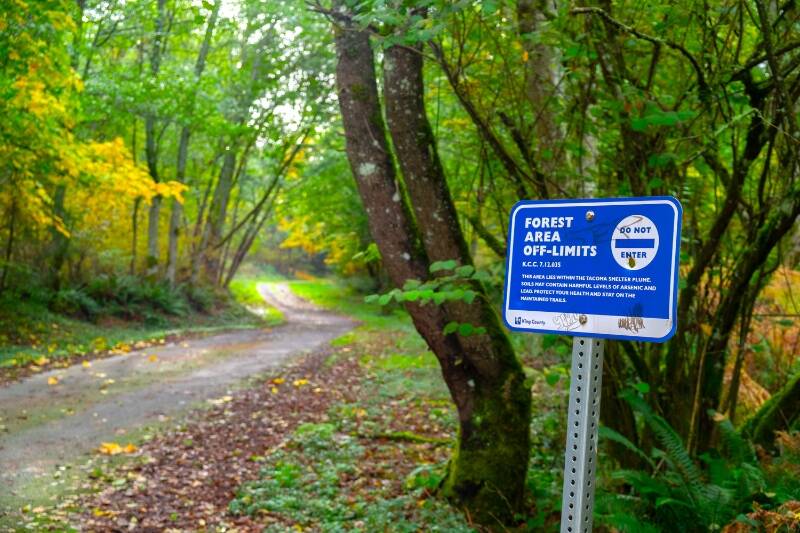Forty years ago this fall, a little-known and often unrecognized Vashon Island court case was decided, leaving a profound effect on the national environmental movement. It reformed the legal concept of trespass and changed the way we use our parks and trails here on the island.
All these transformations began in October 1983, when a district court found in favor of Marie and Mike Bradley and their attorney Bill Tobin and against the ASARCO smelter at Point Defiance. The case, Bradley vs ASARCO, claimed trespass by the ASARCO smelter for depositing arsenic and other heavy metals on Marie and Mike’s Vashon Island property near the Tahlequah Y.
Two years, later the Washington Supreme Court upheld this judgment.
The ASARCO smelter opened in 1880 as the Tacoma Milling and Smelting Company along the waterfront east of Point Defiance. In 1889 it was purchased by William R. Rust (after whom the Town of Ruston was named), who converted it to a copper smelter and then sold it in 1905 to the American Smelting and Refining Company (ASARCO), which built the main smelter stack — the tallest in the world at the time. An even larger stack was built in 1917.
It is these stacks that became the source of the airborne pollution that Mike and Marie decided to fight. As a result of the Bradley case and the enforcement of other environmental laws, the smelter ceased operations in 1985, and the stack was brought down in 1993 as the effort to cleanup the ASARCO site got under way. The plume from the ASARCO smelter, carried by the prevailing southwesterly winds, headed primarily to the southern and eastern area of Vashon-Maury Island. The plume also affected Browns and Dash Point, Normandy Park, Des Moines, and Burien. All these areas are part of continuing testing and cleanups.
The Clean Air Act of 1973 led to many local authorities beginning to regulate emissions from industrial sites. Public hearings sought to establish limits on emissions of arsenic and other heavy metals, but ASARCO was granted exemptions, which led to Mike and Marie’s decision to fight in the courts. They asked attorney Bill Tobin to represent them, and in 1983 the case of Bradley vs ASARCO began.
Mike and Marie argued that ASARCO’s emissions constituted trespass and nuisance. ASARCO argued that when the trespass was indirect, as in this case, because the heavy metals and arsenic were not directly deposited by ASARCO but by the wind, the legal definition of trespass did not apply.
The court ruled that the concept of indirect trespass was obsolete because modern scientific methods could demonstrate the connection between the smelter emissions and the deposits on the Bradley’s property. The Washington Supreme Court upheld this principle in 1985, and the Bradley vs ASARC case became one of most important environmental cases in recent times. This case changed nearly a century of legal precedents that did not allow property owners to seek redress for pollution by industries in their area.
For Vashon-Maury Island in particular, this decision is part of the reason we have begun to shift our attitudes about “the woods” and “the trails” in the southern and eastern parts of the Island. Traditionally undeveloped woodlands are seen as an opportunity for us to “get in touch” with nature. The trails that take us into the woods are necessary, but not the primary focus.
Currently on much of Vashon-Maury Island, this is reversed, because the deposits of arsenic and other heavy metals on the Island make the “woods” something to avoid. The trails leading into the woods, because they are capped to prevent disturbing the underlying contaminated soil, are the only safe places to be.
This fall, on the 40th anniversary of the Bradley vs ASARCO decision, is a good time for us to remember the heroic actions of the three islanders who made these changes in enforcement of environmental regulations possible: How two ordinary citizens and their attorney had the courage to hold ASARCO responsible for the pollution it created, and in the process change the laws that had protected industrial polluters for over a century.
We owe a debt of gratitude to these three islanders who made this all possible. Thank you Mike, Marie, and Bill.
Time and Again is The Beachcomber’s regular history column. Bruce Haulman is an Island historian. Terry Donnelly is an Island photographer.



